Nowadays the technological advancements are progressing at an increasingly fast pace and a result, confusion and distortion might arise. The purpose of the today’s article is to inform the modern supply chain / logistics colleagues and the general interested population, about the latest tech trends. Today, based on the research I’ve made, I will present and elaborate shortly on each of the “Top 10 Tech Trends 2018“.
According to Gartner, based on their latest report findings, written on the 3 October 2017, entitled “Top 10 Strategic Technology Trends for 2018“, the main findings revealed the top 10 tech trends for 2018 structured into 3 categories: Intelligent, Digital, Mesh and they include:
1. Intelligent:
A. Artificial Intelligence (AI) Foundations;
B. Intelligent Apps & Analytics;
C. Intelligent Things
2. Digital:
A. Digital Twins;
B. Cloud to the Edge;
C. Conversational Platform;
D. Immersive Experience
3. Mesh:
A. Blockchain;
B. Event-Driven;
C. Continuous Adaptive Risk & Trust
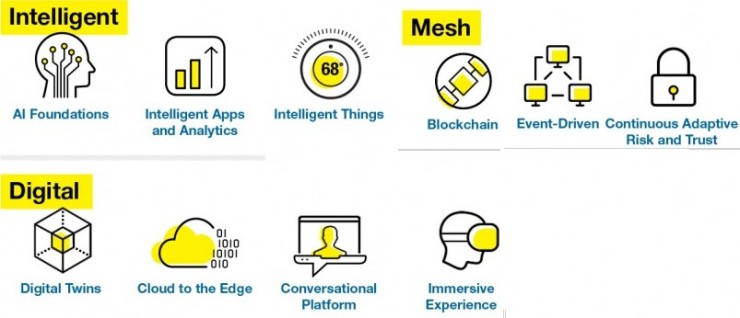
Let’s start with the front-runner of 2018: Artificial Intelligence (AI). AI started from initial ideas and concepts between 1960 – 1980 and then entered into a new era of development where Narrow AI, consisting of algorithms and specific solutions to precise problems are designed. This period started from 1980 and is expected to last until 2020.
In this era Machine Learning dominates the industry, meaning that machines are fed with data, and they learn by themselves to analyse, identify patterns, and structure data. The new solutions created by AI in this era could potentially be of immense value for supply chain, finance, and medical sectors.
The only issue is that, after 2020, General AI will be developed, which means that AI will be equal or even surpass human intellect. To put it shortly, as Professor Stephen Hawking said “I think the development of full artificial intelligence could spell the end of the human race“.
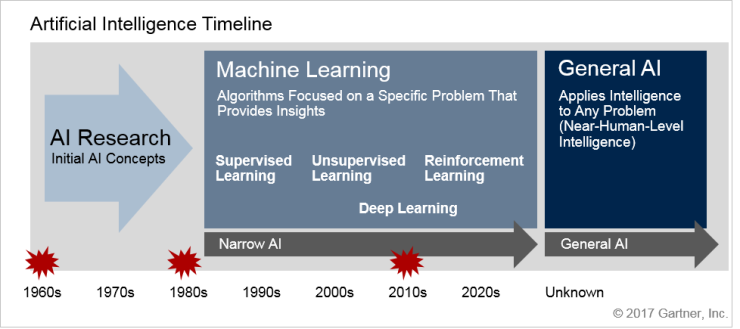
The next trend for 2018 is the Intelligent Analytics. Here, two types of analytics exist: Augmented data discovery and analysis; and Augmented Data Science & Machine Learning. The first one is focused towards the end-users, with features such as Natural-Language Generation (NLG) and Natural Language Processing (NLP) among others. The second one is focused on automating data, finding & sharing new relevant insights, with business, operational and data scientists users.
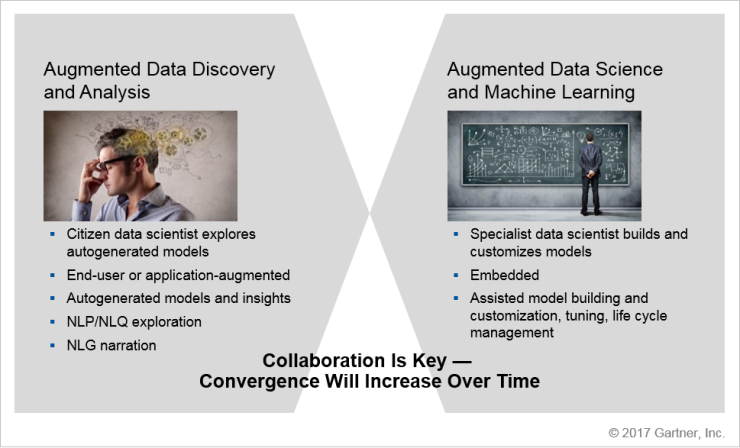
The 3rd trend is Intelligent Things. These “things” include autonomous vehicles, robots drones, and consumer electronics. They are “intelligent” because they are all connected with each other via Internet of Things (IoT), collecting data, insights and actively interacting with humans. By 2022 it is expected that semi-autonomous vehicles (due to regulation) within warehousing and automotive sectors, will dominate.
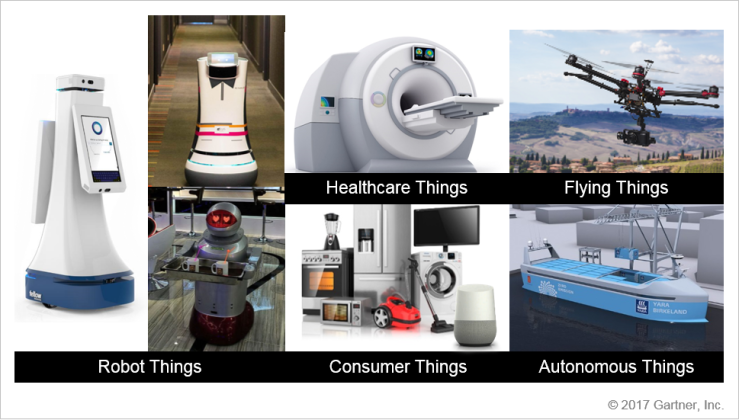
The 4th trend is Digital Twins. The Digital Twins represent a form of a digital representation of a real-world system or entity. For example a physical engine of a car can be transformed into a digital twin, and it can share asset and operational data in real time. This data is analysed by the digital twin via analytics, generating simulations and uploading it into Enterprise Systems (such as ERP, SAP) and then transformed into either operational, maintenance or aggregate fleet data. It is estimated that by 2020 over 20 billion end-points will be connected via sensors, that can generate digital twins.
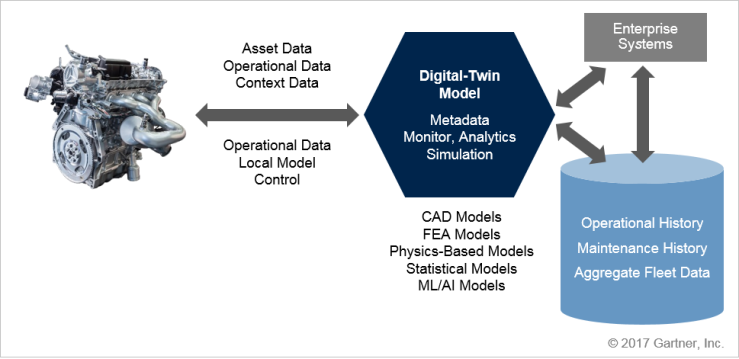
The 5th trend is Cloud to the Edge. Currently there are two types of cloud solutions: Central and Edge. The Central solution stores data in a remote place and the Edge solutions stores the data on local company servers. In 2018 it is expected that these solutions will merge together in a Distributed Cloud.
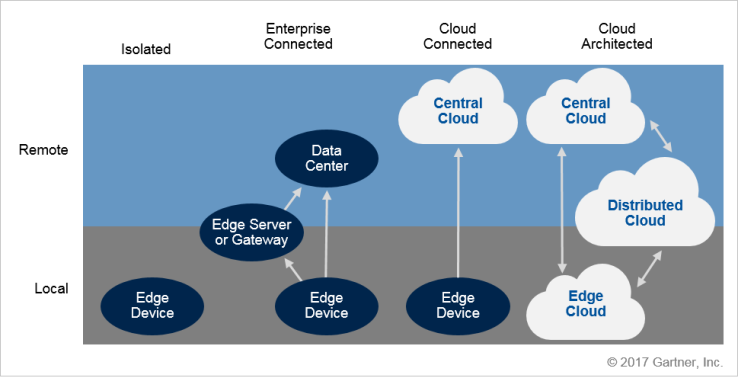
The 6th trend is Conversational Platforms. This means that by 2020 we can expect to exchange knowledge and data with machines via our voices, chatting, typing and via connected things. This data will then be processed by the conversational platform and integrated within a User Interface such as Mobile Apps, providing functions such as Search Engine, Data Store, and Cloud Service, among others.

The 7th trend is Immersive Experience which is provided by Virtual Reality (VR), Augmented Reality (AR), and mixed reality technologies. This means that companies can integrate head-mounted displays (HMD) for purposes such as employee training. The market for HMD is expected to grow in 2018 totalling an estimated total of 67 million shipped units, and $18.8 million by 2021. AR, VR, mixed reality and conversational systems are expected to dominate until 2022, followed by the development of a completely transparent and immersive user experience, until 2028, by facilitating a natural interaction between humans and machines.
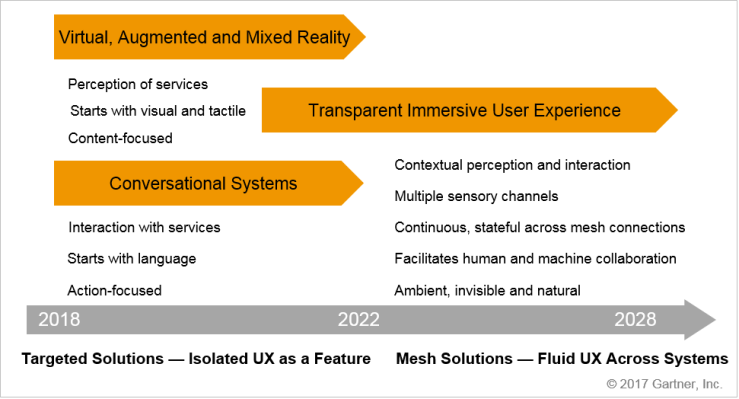
The 8th trend is Blockchain. In 2017 IBM already partnered with 7 major European banks (Deutsche Bank, HSBC, KBC, Natixis, Rabobank, Societe Generale and Unicredit) to implement Blockchain technology. Blockchain is a decentralised, shared and distributed ledger, which stores all transactions, encrypted, accessible by authenticated persons at any given moment. Blockchain insures full financial and supply chain visibility, in order to make transactions faster while keeping track accurately of all historical records. Expected working solutions to be implemented in supply chain and finance will emerge by 2021.
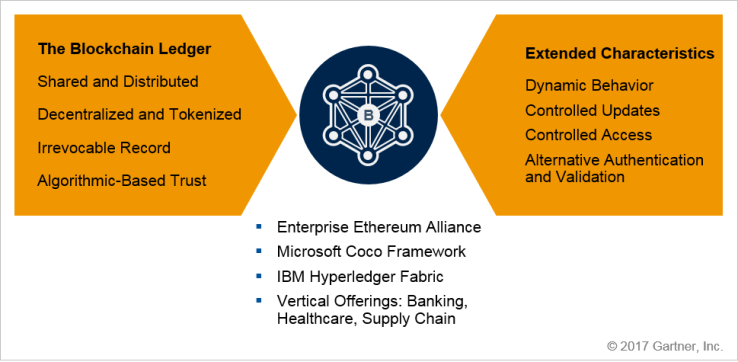
The 9th trend is the Event-Driven Model. Nowadays, the companies focus on gathering and processing events data, which only provides a silo view. This needs to be changed. Basically there are two models: Event-Driven; and Request Driven. The first one can sense and notify the users, it is flexible, fluid, unstructured and flexible action-centric system. An example is SAP Event Stream Processor.
The second one is a more rigid, structured, controlled data-centric, based on dependancies between systems, however it provides more control on actions and services. What is needed to be still developed is a connecting and linking layer between Event and Request drive models, in order to complement each other, and provide an equal choice, based on company’s requirements.
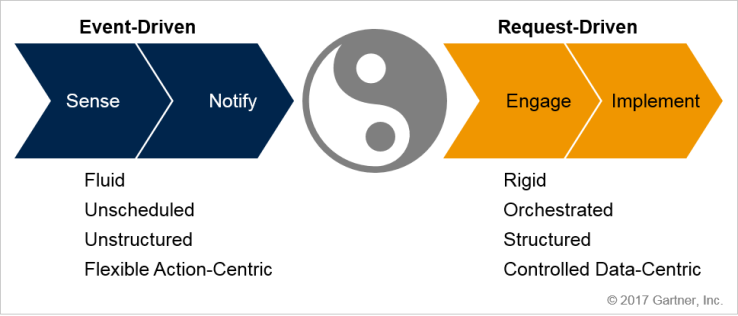
The 10th trend is Continuous Adaptive Risk & Trust. This trend tackles the increasing risk and threats from a cyber-security point of view. The hackers become more advanced, and corporations can loose millions and even billions in intellectual property and proprietary data. A real-life example is the WannaCry Ransomware which corrupted and locked files from 200,000 computers in over 150 countries, asking for a ransom of $300 to be paid in Bitcoin, in order to recover them.
Therefore, in order to prevent and reduce these types of risks, the Continuous Adaptive Risk and Trust Assessment (CARTA) strategic approach was created and recommended to be implemented. It can potentially support and enable a “real-time, risk- and trust-based decision making with adaptive responses“.
As a result, the DevSecOps Model was created by Gartner which says that Sec = Security space must integrate two players: Dev = Developers and Ops = Operations. The developers have to Plan, Create, Verify and check the Preproduction, part of the monitoring and analytics process, and to release these activities to the Operations. Additionally, the operations flow should include activities such as Prevention, Detection, Response, and Prediction, and to adapt to the requirements set by the Developers.
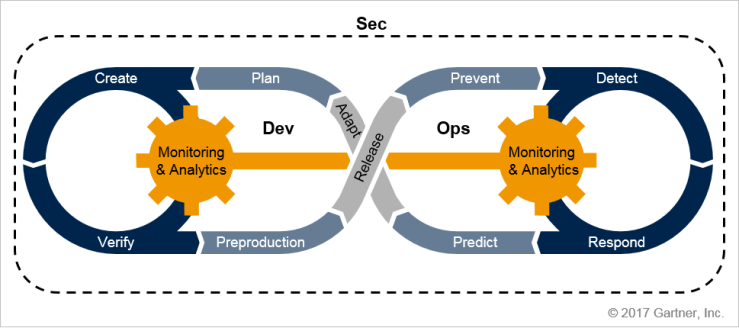
In conclusion, this comprehensive blog provided a technological glimpse of the future development and innovation landscape in 2018.
In my opinion, I think that all the top 10 trends will merge into one single solution for the future, and that is Artificial Intelligence Control Towers. I say this because it seems that AI is the main engine that can handle large data, learn, take decisions and implement, and the other 9 trends are only different tools, that make AI even more powerful.
Why Artificial Intelligence Control Towers? Well, all this data and advanced capabilities have to be consolidated into One Centre of Command from where there is an overview on operations, supply chain, and even the entire company performance.
In my opinion, I think that the 10 trends can be visualised as a tree that touches and shapes our world with its foundation and branches. The foundation is AI and the branches are the 9 trends above mentioned.
I believe that our political leaders together with entrepreneurs and technology companies should gather together in a meeting and decide how to regulate the technological advancements in a sustainable way, supporting our global economy and social welfare without compromising our values and freedom.
Together we have the responsibility to water this tree very carefully, so that we get good “fruits” that we and the next generations can benefit from.
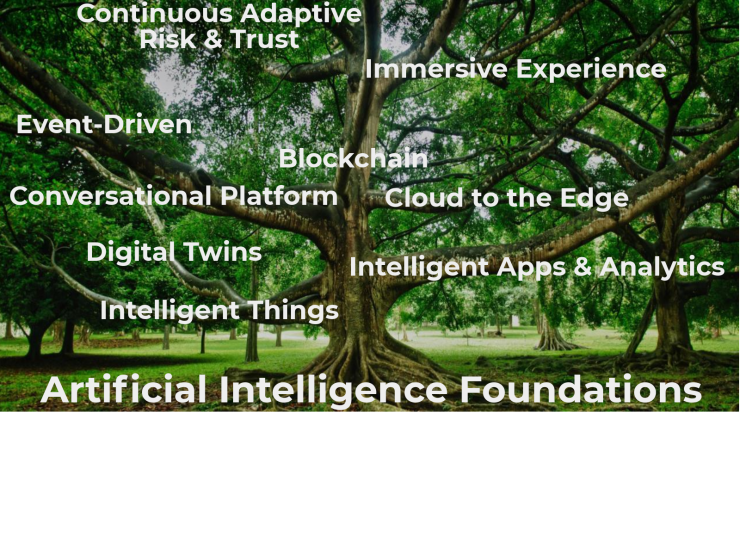
1 thought on “Top 10 Tech Trends 2018”